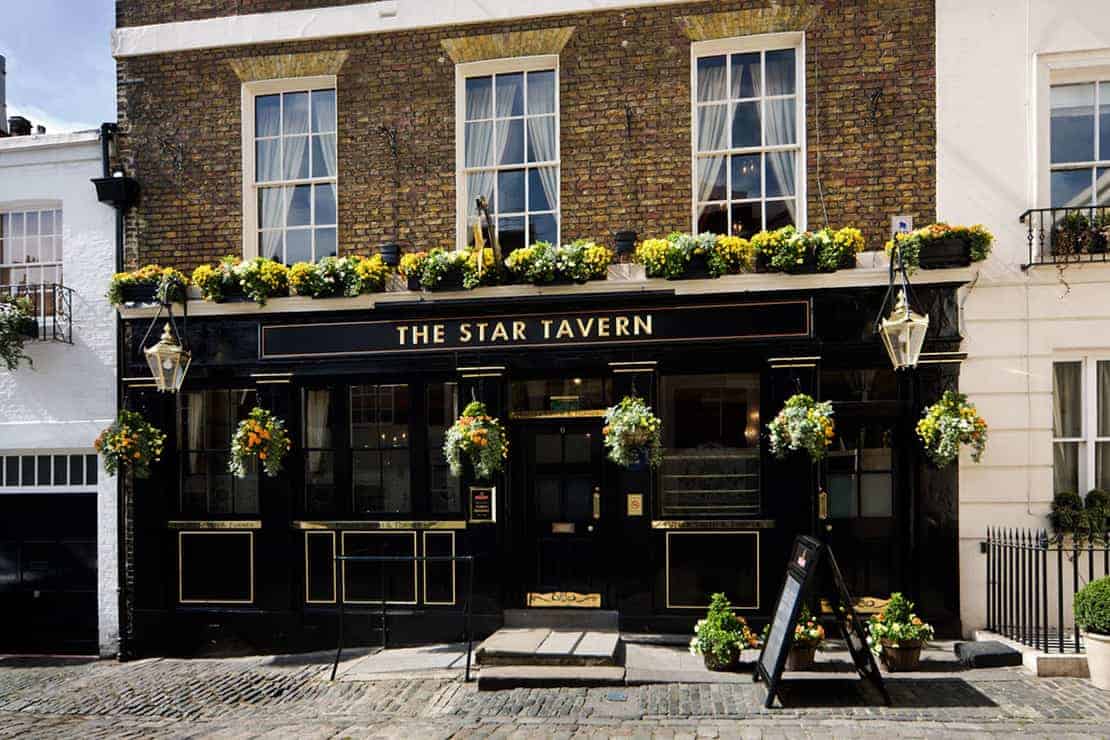In this post I’m going to give you some details about how to do a fantastic pub crawl through London. You’ll need to do this London pub crawl in the day because some of the pubs in the city will close early.
Also you’ll need a Zone 1 tube pass as you’ll need to travel by tube between some of the pubs.
And a word of warning its probably a good idea to not have a pint at every pub because you probably won’t finish the tour.
Go To Blackfriars Tube Station
Pub 1 The Blackfriars 74 Queen Victoria St
This pub is a grade 2 listed building built in the Art Nouveau (Arts & Crafts movement) in a religious style by Herbert Fuller-Clark and sculptor Henry Poole in 1875 and was remodelled in 1905.
Architecturally its one of the most interesting pubs in London. It was saved from demolition by Sir John Betjeman.
We walk away from the River and turn left on Fleet St to the next pub
Pub 2 Ye Olde Cheshire Cheese 145 Fleet Street (turn down the lane to find the entrance)
Ye Olde Cheshire Cheese was built just after the Great Fire of London in 1666 however there was a pub on the site since 1538, while the vaulted cellars may date back to the 13th Century when there was a monastery on the site.
In the bar there are plaques celebrating past regulars of the pub that include Mark Twain, Charles Dickens Alfred Tennyson and Arthur Conan-Doyle.
We now cross the road to the next pub
Pub 3 The Tipperary 66 Fleet Street
The Tipperary was built in 1605 and was originally called The Boar’s Head and the building survived The Great Fire of London due to it being made of stone.
The Tipperary claims to be the first Irish Pub outside of Ireland and the first to sell Guinness in England.
This is an historic site, first occupied by a 13th century White Friars monastery, then a 16th century tavern at the sign of the ‘Bolt-in-Tun’, later to be a busy coaching inn. The ‘Boar’s Head’ name was adopted in 1883 or 1605 depending on what you read.
Either way the original pub was demolished and rebuilt in the late 19th century by Mooney’s.
We keep walking west and turn right at Fetter Lane and turn left at High Holborn and cross the road to our next pub
Pub 4 Cittie of Yorke 22 High Holborn
The Cittie of Yorke pub is a Grade 2 listed building that was built in the 1920’s but there has been a pub on this site since 1430.
The Welsh poet Dylan Thomas penned an impromptu ode to the pub when it was called Henneky’s Long Bar.
Several features catch the eye, including the cosy booths along the east wall (usually taken by lawyers from the adjoining Gray’s Inn), wooden beam ceiling, and the great iron fireplace in the centre of the room — noted as a bit of a mystery as far back as 1962 in Geoffery Fletcher’s The London Nobody Knows. Many people know this place today, and it’s often standing room only in the main bar.
We now go to the Chancery Lane Tube Station because after a few beers we don’t feel like too much more walking and go one station to Holborn then change to the Piccadilly line to Leicester Square. We walk through Chinatown until we find Dean Street
Pub 5 The French House 24 Dean Street Soho
The French House is a grade 2 listed building and was opened in 1891 by a German named Herr Schmidt.
After the fall of France in World War II, General Charles de Gaulle escaped to London where he formed the Free French Forces. His speech rallying the French people, “À tous les Français” is said to have been written in the pub.
The French House was and is popular with artists and writers. Brendan Behan wrote large portions of The Quare Fellow there, and Dylan Thomas once left the manuscript of Under Milk Wood under his chair. Other regulars over the years include Francis Bacon, Tom Baker, Daniel Farson, Lucian Freud, Augustus John, Malcolm Lowry, Calum, Rosie and John Mortimer.
We now continue to walk north turn right at Batemen Street and the next pub is on the left
Pub 6 The Dog and Duck 18 Bateman Street Soho
Another well-known Soho watering hole with great literary associations, the Dog and Duck was where George Orwell used to drink. It has an ornate Victorian interior – the pub is Grade-II listed and noted for its lavish tiling and grand mirrors. In its previous incarnation on the same site (the current pub was built in 1897), John Constable and Dante Gabriel Rossetti were also apparently regulars – and the owners boast of a visit from Madonna.
We now walk back through Chinatown (a perfect opportunity for some food to break up the drinking) and then to Leicester Square Tube where we take the Piccadilly line to Hyde Park Corner walk down Knightsbridge a left on Old Barrack Yard and walk through to Wilton Row to the next pub.
Pub 7 The Grenadier 18 Wilton Row Belgravia
Originally built in 1720 as the Officers Mess for The First Royal Regiment of Foot Guards, the Grenadier became a licensed premise in 1818 to serve as The Guardsman Public House; it was latter renamed The Grenadier.
Being secluded in a wealthy district of London, it was frequented in the past by the Duke of Wellington and King George IV, and continues to attract an elite clientele such as Madonna and Prince William, and LSE Global Politics students. It is also said to be haunted by the Being secluded in a wealthy district of London, it was frequented in the past by the Duke of Wellington and King George IV, and continues to attract an elite clientele such as Madonna and Prince William, and LSE Global Politics students. It is also said to be haunted by the ghost of a former soldier who was beaten to death for cheating at cards.
You now walk to Wilton Place then walk back towards Knightsbridge and turn left onto Kinnerton Street and walk to the next pub
Pub 8 The Nags Head 53 Kinnerton Street Belgravia
This wonderful, poky little pub is just a short distance from the shopping district of Harrods and Knightsbridge, but is a completely different world. Just reaching it feels like a discovery, with its location down a quiet little mews. Once you stoop inside, you’ll find a cluttered assembly of portraits, bric-a-brac, pewter mugs, and curiosities, and Adnams on tap. This is where you come to get a sense of the public house as it was like centuries ago. Mobiles are banned; the walls are cluttered with everything from cartoons to baseball reports, garden tools to vintage penny-slots.
You now walk through the labyrinth that is Belgravia to the last pub of the pub crawl.
Pub 9 The Star Tavern 6 Belgrave Mews W, Belgravia
The Star Tavern in Belgravia has seen its share of well-heeled visitors – including Peter O’Toole, Diana Dors and Alexander Korda – since it was built in the early 19th century. However, it is most noted for its role in one of the most colourful – and notorious – episodes in 20th century England. The grand upstairs room was supposedly where the Great Train Robbers hatched their plan to attack the Mail service in 1963. Bruce Reynolds, the ringleader, would reportedly drive up from south-west London in an Aston Martin to flesh out the details of the £2.3m heist.
It’s believed that this was a favoured haunt of John Profumo for his discreet liaisons with Christine Keeler and that assorted luminaries from Bing Crosby to (perhaps less surprisingly) Peter O’Toole and Princess Margaret would occasionally pop in for a quick sharpener.


Do you still offer these pub walks?
No I don’t do it as a guided walk but provide the plan for you to do the walk yourself, although I’m sure it would make a fun tour
The best type of pub crawl -not planned!!